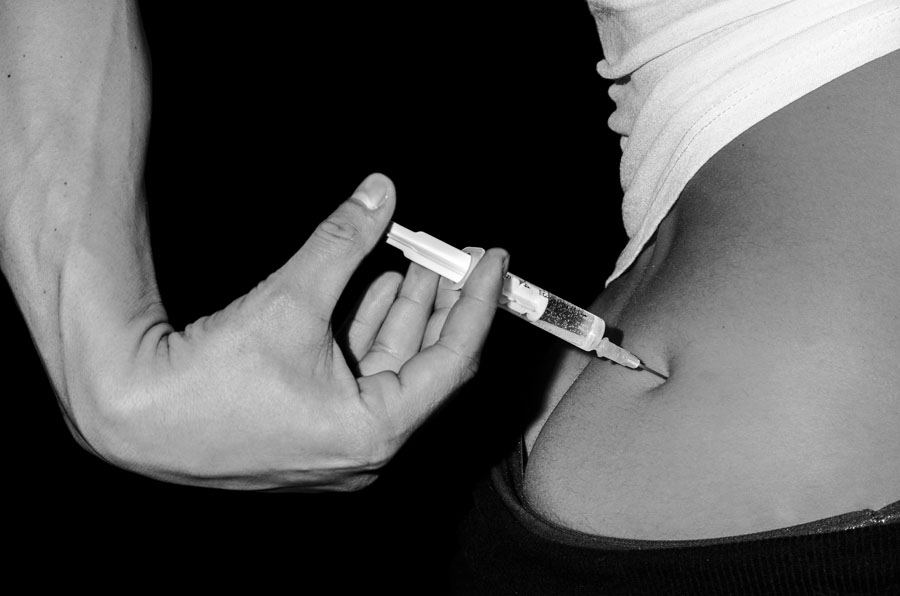Barry Bonds. Lance Armstrong. Marion Jones. Some of the biggest names in sport have become synonymous with scandal, having been investigated or banned for using performance-enhancing drugs (PEDs). No one publicly condones the use of steroids or other banned substances, but when millions of dollars and eternal glory are on the line, it’s not hard to see how some may find themselves on a slippery slope of self-enhancement, with the potential side effect of self-destruction.
It’s not always high-stakes athletes who are willing to cheat, either. Amateur athletes have increasingly been turning to performance enhancing drugs (PEDs). Trail running has exploded in popularity over the past decade, and with more sponsorships and attention have come more allegations of blood doping. Are elite trail runners juiced up?
During the 2015 Ultratrail du Mont-Blanc competition, Gonzalo Calistos tested positive for Erythropoietin (EPO), a hormone that helps the blood carry more oxygen to the cells. That same year, Elisa Desco entered the 50-mile The North Face (TNF) Endurance Challenge, three years after completing a ban for testing positive for EPO in 2009. Many athletes were outraged, claiming that she shouldn’t have been allowed to compete due to her record, even though her ban had been fully served.
Both athletes maintain their innocence and say they didn’t knowingly take performance-enhancing drugs. Calistos suggested that his Ecuadorean background and regular exposure to high altitudes might explain his atypical blood profile, but neither the International Association of Athletics Federation (IAAF) nor the World Anti-Doping Agency (WADA) have commented on that. Dr. Chris Harnish, a trail runner and exercise physiologist, believes more comprehensive data, such as from “anonymous surveys and some random drug testing” versus isolated incidents, are necessary to determine the true state of doping in trail running.
However, with PEDs being relatively easy to purchase and so few races implementing drug testing, it is definitely possible that PED use is “a lot more rampant than we realize,” says Dr. Harnish. In response, some runners have been taking matters into their own hands. Testing is irregular in this blossoming sport partially because it is prohibitively expensive, but in 2016, Paul Kirsche and David Roche started the website runcleangetdirty.org, where runners can pledge their commitment to being substance-free.
The North Face (TNF) is taking a stand of its own. Their new policy states not only that athletes serving a ban will be unable to participate in their Endurance Challenge Series events, but also that athletes who have completed a ban, while able to compete, will be ineligible for “prize money, awards, podium recognition, or rankings.” They will also be barred from the elite field.
The mere existence of this policy denotes the need for regulation in a growing sport. Maeve Sloane, TNF’s Performance Sports Marketing Manager, admits that “as any sport grows, so does the number of issues that arise,” but at the moment TNF doesn’t believe doping incidents are growing at an “alarming rate.” Still, TNF has joined Hobbs and the ATRA to set forth a plan for the coming years and raise awareness of the issue.
Will the new policy make much of a difference? Sloane acknowledged that the Endurance Challenge Series would not start testing its competitors, and many are left asking: What good is banning illegal substances if there’s no testing? Anne Riddle, a trail runner with over 25 years of experience, thinks that athletes will realize “they are likely to get away with it…until drug testing is more common.” However, both she and Michael Owen, the SE Ohio Trail Runners race director, don’t see testing becoming common in the near future due to the expense.
“With participation growth, and competition depth growth, we will surely see more people trying to gain an advantage illegally,” says Owen. “I don’t let it affect me—there are so many people who run ultra’s for their own reasons. 99.9% of us don’t do it for the money. We’d be cheating ourselves of a pure experience.”
People get into trail running to challenge themselves or just try something new. It’s seen as a pure sport, more closely connected to nature than many others, and perhaps that’s why the idea of doping hits such a raw nerve with some participants.
For the most part, however, many runners at the recreational level feel that the issue is being blown out of proportion. “It’s not a common thing,” notes Scott Dunlap, a 12-time national trail running champion and writer of A Trail Runner’s Blog. He fears that “the more [a few runners] talk about it, the more people outside the sport think it really is a considerable factor.”
Nancy Hobbs, Executive Director of the American Trail Running Association, agrees that some “vocal runners” are drawing unnecessary attention to the issue. “It’s like a whisper down the alley,” she speculates of individuals who are suspicious of how well others are doing. While testing is “a good thing to do,” Hobbs says, what’s more important is to educate runners about performance-enhancing drugs and how testing works.
This would help avoid accidental use of banned substances, which can be found in pretty unlikely places. One athlete wound up serving a six-month ban thanks to an ingredient in a medication meant to treat menopausal symptoms. If runners at every level knew what to look out for, Hobbs explains, they could talk to their doctors to ensure that medications for legitimate health issues wouldn’t land them on the banned list.
With new policies and growing awareness, Sloane is optimistic about trail running’s future. “As more brands and races adopt clean sport policies, it will continuously become more difficult to get away with doping.”








